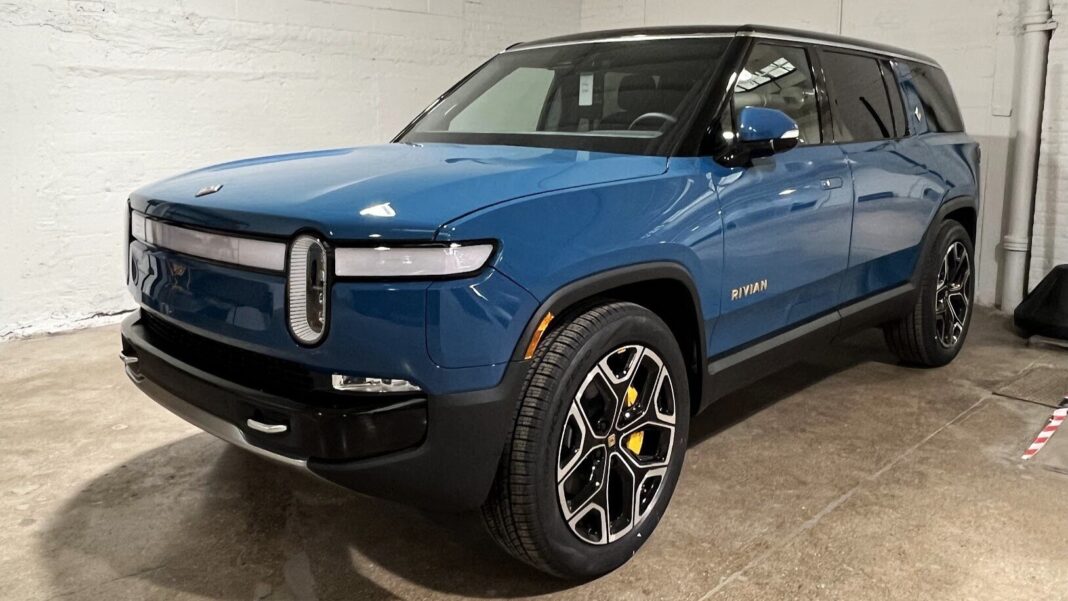As expected, President-elect Donald Trump is looking to kill the $7,500 EV tax credit in his second term, Reuters reports.
Trump’s energy policy transition team has met “several times” to discuss this since the Nov. 5 victory, Reuters reports. Key players include billionaire oil baron Harold Hamm, founder of Continental Resources, and Republican North Dakota Governor Doug Burgum, who Trump just selected for Interior Department secretary.
The credit is part of the Inflation Reduction Act and runs through 2032. Trump can’t unilaterally repeal it, though he can push Congress to take action.
“Congress would likely utilize a special type of legislative vehicle called ‘reconciliation’ that only requires a majority of the Senate, instead of the typical 60-vote threshold to overcome a filibuster,” Andrew Rogers, former Chief Council for the US Senate and Deputy Administrator for at the US Department of Transportation, tells PCMag.
Biden used the reconciliation process for the Inflation Reduction Act and the American Rescue Plan in 2021. Trump used it to pass the Tax Cuts and Jobs Act in 2017.
President Biden at the 2022 Detroit Auto Show (Credit: Anadolu / Contributor / Anadolu via Getty Images)
Though Republicans are expected to control both houses of Congress in 2025, there could be some pushback on repealing the credit since 60% of the Biden administration’s clean energy and EV funds have gone to red states, Power Technology reports. EV manufacturing plants have cropped up in South Carolina and Georgia, for example.
The public needs to purchase the EVs those plants make to protect the jobs, and the tax credit is one incentive for switching from gas to electric. So far this year, the Treasury Department has issued over $2 billion in clean energy discounts. “Of the more than 300,000 advance payments that have been issued, more than 250,000 are for tax credits related to new clean vehicles,” it says.
However, car manufacturers have struggled to meet strict requirements, which require vehicles to be manufactured in the US with a certain portion of domestic battery materials and components (not Chinese). Vehicles that only meet a portion of the requirements, such as Rivian’s lineup and the 2025 Hyundai Ioniq 5, can qualify for a $3,750 half credit.
Repealing the tax credit is “not a done deal,” particularly because of “how much spending has gone to Republican districts,” Rogers says. “But there is definitely a path to repeal.”
Other EV-related provisions will likely stay intact, such as funds for charging stations, because the way they were written requires more than 60 votes in the Senate to overturn.
Recommended by Our Editors
“You eliminate these credits, and what do you do? You end up ceding the territory to other countries, particularly China,” US Energy Secretary Jennifer Granholm told reporters at the COP29 climate conference, Reuters reports.
Tesla CEO and Trump supporter Elon Musk has endorsed removing the tax credit because it would be “devastating” for his competitors and help Tesla “in the long run.” It would make it more difficult for other automakers to offer cost-effective EVs while they are still scaling up.
Musk says he does not believe in government subsidies for any industry, although Tesla prominently advertises its tax credit eligibility on its homepage as a marketing tool. The company has received billions in government funds over the past two decades, CNBC reports. Tesla built its Fremont, California, manufacturing plant with the help of a $465 million loan from the US Department of Energy, and it has sold nearly $9 billion worth of emissions-related regulatory credits, according to its public filings.
In September 2023, Vice President-elect JD Vance introduced the Drive America Act, which would repeal the federal EV tax credit and replace it with a subsidy for buying American-made gas- and diesel-powered cars. It has not seen any movement in Congress yet, though.
Get Our Best Stories!
Sign up for What’s New Now to get our top stories delivered to your inbox every morning.
This newsletter may contain advertising, deals, or affiliate links. Subscribing to a newsletter indicates your consent to our Terms of Use and Privacy Policy. You may unsubscribe from the newsletters at any time.
About Emily Dreibelbis Forlini
Senior Reporter







